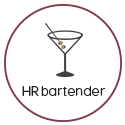Estimated reading time: 5 minutes
Someone recently asked me about a project that I worked on during my career that I was particularly proud of. My answer was a project that I worked on as a consultant. The company was convinced that they had a training problem and brought in a team of consultants to “fix” the problem.
The situation was interesting because there was this room full of consultants and we all had to learn how to work together. But one thing we were all committed to was doing a proper assessment of the situation. In doing so, we discovered that the problem wasn’t training. It was employee scheduling. This changed the entire scope of work but thankfully, it saved the company a lot of money and their challenge was assessed and solved correctly.
This story was also a reminder to me that if organizations use good processes, it will result in good outcomes. Please note I didn’t say that you would get the outcome you expected or maybe even wanted. But a proven process, when administered correctly, can point you in the right direction. Neil deGrasse Tyson mentioned the same thing in his MasterClass on Scientific Thinking and Communication “What You Know is Not as Important as How You Think”.
Now is a great time for organizations to look at their processes to make sure that they’re using proven models and that employees know how to use them as well.
Organizations should be very focused on what makes them stand out from their competition. It seems to me that’s the uniqueness factor. If a company says, “We do what everyone else does and we do it exactly the same as everyone else.” well, that’s not really a compelling argument to buy your product or service. Now could be a perfect time to discuss what makes the company unique and then ensure there are systems in place to support it.
HR Departments Need to Prepare for Delivering Value
The business world is constantly changing. But we can evaluate our situation, acknowledge our strengths, address our challenges, and develop a plan. The more prepared we are, the better we can react to the changing needs of the organization. And the better we can be at delivering value.
How To Calculate Return on Investment
Return on investment is an important business calculation. It can help organizations make good decisions and it can help organizations measure the results of decisions they’ve made. But the value in ROI isn’t in just calculating the number. It’s in making sure you calculate the number completely. Using the right information. Because that allows the organization to gain the proper insights.
How to Evaluate Your Employee Value Proposition
Regardless of what your organization is doing right now from a recruiting perspective, the organization’s employment brand is important. Which means the employee value proposition is important. Now could be a perfect time to see how your EVP looks in a quadrant model. Ensure you have a balanced offering of components that will be attractive to candidates in the short-term and to career-focused employees in the long-term.
Organizations: Please Stop Ranking Candidates and Employees
Ranking candidates and employees is a form of bias called contrast bias. It’s when we’re comparing people to each other versus what we should be comparing them to – which is the company standard. There’s a reason that ranking fell out of favor decades ago. It doesn’t help organizations attract, engage, and retain the best talent. In fact, organizations could just be making talent decisions using the wrong information.
Now has always been the time of year when I start thinking about my goals for the year ahead. Yes, I start early. It takes time to weigh the options and to figure out the time and resource commitment. When I can add a little fun into the process, that’s great! Especially because I work remotely. In an office environment, the company might have fun signs or something talking about progress toward goals. When you’re not in the office every day, you might need something that helps you encourage yourself.
Problem Solving Can Be a Proactive Exercise
How many times have you been on the receiving end of a situation and said to yourself, “This problem didn’t happen five minutes ago. They’ve known for a while and just got around to telling us.”? Time to employ some proactive problem-solving techniques to better deal with the situation.
Force Field Analysis: What Is It and Why Use It
Decision making is an important skill. When we make bad decisions, they could weigh on us for a long time. Having good decision-making tools can help us ask the right questions so we make the best decisions possible.
While there are some very positive business indicators right now, organizations are going to continue their focus on profits and market share. They will be regularly evaluating their progress toward goals and wanting solutions to their challenges. Not only will the organization need to have good processes in place, but managers will need the same tools to ensure their aspect of the operation is running as effectively and efficiently as possible. Oh, and employees will need the same tools to maintain a high level of performance.
Image captured by Sharlyn Lauby after speaking at the SHRM Annual Conference in Orlando, FL
49




Justin Rigsby says
The author makes several important points on simplifying organizational procedures, stressing specific value propositions, and actively teaching HR to create value in the face of change. Before jumping to solutions, the author underlined the need of established processes and careful assessment, as well as providing examples, such as the consulting story, of when following a procedure resulted in a superior end result. The author also wishes to empower businesses to identify and focus on being better prepared, as well as to make your organization unique. This differentiation is important for acquiring a competitive advantage. The idea is to provide useful suggestions linked to procedures, organizing and different measures that provide companies and managers with practical direction in critical areas such as strategy, ROI, recruiting, and goals, among others. Additional real-life examples and successful next steps, on the other hand, could serve to improve the concepts. For example, the author’s example demonstrates why procedure is important, but how should they train employees on successful management? The author also warns against ineffective ranking systems, even when alternative methods of evaluation might be preferable.